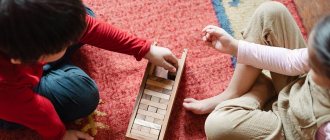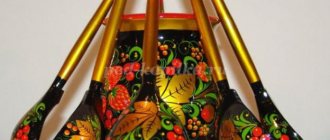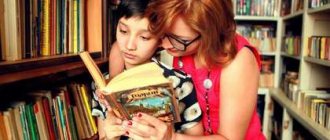Project in the middle group Topic: Drink milk, children, you will be healthy!
Project
Topic: Drink milk, children, you will be healthy!
Group:
Secondary school No. 12
PROJECT PASSPORT:
Educational areas:
cognitive, social-communicative, speech, artistic and aesthetic development.
IMPLEMENTATION PERIOD
: short-term (two weeks)
PROJECT TYPE
: educational-game, group.
PARTICIPANTS
: teachers, children 4-5 years old, parents of pupils.
PROBLEM:
Preschool children do not understand the importance of milk and dairy products in the development of the human body.
RELEVANCE OF THE PROBLEM
: Observing children during breakfast and afternoon snack, it was found that only a few children willingly eat food prepared with milk. During conversations and games, it became clear that not all children like milk and prefer carbonated drinks and tea, which is not entirely healthy food. It turned out that children in the middle group did not have enough knowledge about whether these products were healthy, so there was a need to expand the knowledge and ideas of preschoolers about the benefits of dairy products and their significance for a growing body.
TARGET
: Reveal the importance of milk and dairy products for proper nutrition of preschoolers.
TASKS:
For children:
— Expand knowledge about milk and dairy products.
— To give an idea of the importance of milk and dairy products for the child’s body, to identify the role of milk in human life.
— Develop cognitive interest in research activities, the desire to learn new things.
For teachers:
— Create the necessary conditions for introducing children to milk by enriching the developmental environment
For parents:
-To help children understand the importance and necessity of children consuming milk and dairy products for the development of the body.
-Develop interest in joint activities with children and teachers as part of an educational project
HYPOTHESIS
: If children learn more about the value of milk and dairy products through their own research activities, they will understand that milk is a valuable food product for the child's body and they will have a desire to eat it.
EXPECTED RESULTS:
— Enrich knowledge about milk and dairy products, their importance for the child’s body and the role of milk in human life.
-Find out what animals give people milk;
— What can be prepared using milk?
— Develop a cognitive interest in research activities and a desire to learn new things.
PROJECT PRODUCTS:
Designing a selection of visual and practical material for children, creating a “Farm” layout, a selection of games and exercises on the topic “Cow” with illustrative material, children’s work “How I Love My Cow”, making attributes for the role-playing game “Dairy Store” products", composition of the fairy tale "The Adventures of Yegorushka in the Dairy Kingdom" (teachers),
Summary of educational activities in the middle group for FCCM “How milk came to the table”
tactile book “How milk came to the table.”
Progress of educational activities:
Children's attention is attracted by the sounds “Meow! Meow!". The cat Vasya appears.
Hello guys.
Vasya, why are you meowing so pitifully?
I want milk! Do you have a little milk for me?
There is a little. (Vasya laps up the milk) Very tasty! Only a little. Can you tell me where else I can get milk? (Children’s answers: in the store, at the cow) I went to the store and they don’t give you anything without money. Who is this cow? I live in the city and have never seen any cows. Maybe you can help me find this cow. I really want milk!
The guys and I will tell you, Vasily, about cows and how milk comes to the table.
Now we will all be transported together to the summer lawn. “We spun, we spun, we all ended up in the meadow” (the children, together with the cat, move on to the model “A family of cows grazing in the meadow”).
Cat: Are these all cows? Why are they different colors? (cows come in different colors: black, brown, and motley) Why is this cow so small? She ate poorly and didn't grow? (this calf is the baby of a cow; when it grows up, it will be big like mom and dad) Mom is a cow, the baby is a calf, and who is the dad? (father bull) Why do they all have horns? (defend from enemies) Why a tail? (drive away flies) What are they doing here? Walking? (they walk and eat tasty and juicy grass, so that later they can give healthy milk) And the cow, and the calf, and the bull - do they all give milk? (no, only a cow, she has an udder)
It's good in the summer - it's warm, there's a lot of juicy grass. What about in winter? No grass - no milk? What do cows eat in winter? (hay) Where do they get it from? (a cow is a domestic animal, it has an owner, he mows the grass, dries it in the summer, and feeds the cows hay in the winter)
In winter, it’s probably cold for the cows outside? (the owner is building a warm barn for the cows. Now we will see how the cow lives there) We are walking through the tall grass in the meadow, so we need to raise our legs higher.
Children move on to the “Cowshed” model.
The walls of the barn are made of wood - the cows will be warm, there is a window - it will be light for the cows, the floor is covered with straw - it will be clean and soft, there is a feeding trough in the barn, hay is placed in it (the child puts hay), there are drinking bowls (pours water). Cows are milked here. When the cow is healthy and well-fed, she gives milk. A milkmaid can produce a whole bucket of milk from one cow. Help yourself, Vasya!
Cat: Very tasty milk! Sweet! I would also like something sour: sour cream or yogurt! Can a cow give you sour cream? (sour cream and other fermented milk products are made from milk; now we will show you how this is done, this milk truck will carry milk to the dairy plant, and all the children will become drivers of milk trucks and will also go - the children imitate the movements of the milk truck, moving on to the next model)


